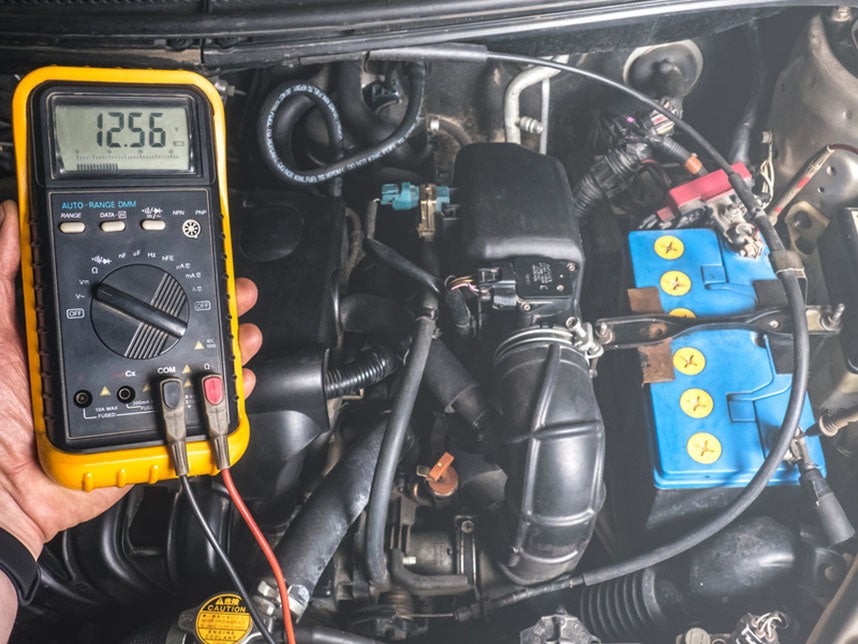A car battery is the heart of your vehicle’s electrical system. A dead battery means a dead car. This guide will show you how to use a multimeter to test your car battery and diagnose common problems, ensuring you’re never left stranded with a flat.
 How to check car battery with multimeter
How to check car battery with multimeter
What is the Ideal Voltage for a Car Battery?
A fully charged car battery should read around 12.6 volts. This is known as the “resting voltage,” meaning the battery hasn’t been charged or discharged for at least an hour. Driving the car or recently charging it will give a falsely high reading. For the most accurate measurement, test the battery after the car has been sitting overnight. A reading of 12.2 volts indicates a 50% charge, and anything below 12 volts is considered discharged.
How to Use a Multimeter to Test Your Car Battery
Testing your car battery with a multimeter is a simple process:
-
Safety First: Ensure the engine is off and the car is parked on a level surface. Wear safety glasses and gloves if available.
-
Locate the Battery: The battery is typically in the engine bay, but may be under the rear seat or in the trunk. Consult your owner’s manual if you can’t find it.
-
Access the Terminals: Remove any plastic covers protecting the battery terminals. Be careful not to touch both terminals simultaneously with anything metal, as this can cause a short circuit.
-
Set the Multimeter: Turn the multimeter dial to the “DC Voltage” setting (indicated by a V with a straight and dashed line above it). Select the 20V range to measure between 0-20 volts.
-
Connect the Probes: Touch the red probe to the positive (+) terminal (usually red) and the black probe to the negative (-) terminal (usually black). A negative reading indicates the probes are reversed.
-
Read the Voltage: The multimeter will display the battery voltage. Compare this reading to the ideal 12.6 volts.
Understanding Parasitic Draw
Even when your car is off, certain electrical components like the clock, radio memory, and alarm system continue to draw a small amount of power. This is known as “parasitic draw.” While normal, excessive parasitic draw can drain your battery over time. If your battery consistently loses charge while sitting, you may have a significant parasitic draw issue that needs further investigation. Disconnecting the battery when the car is not in use for extended periods can help prevent this.
Testing Your Car’s Alternator with a Multimeter
The alternator is responsible for charging the battery while the engine is running. To test the alternator:
-
Start the Engine: With the multimeter still connected to the battery terminals, start the car.
-
Observe the Voltage: A healthy alternator should produce a voltage between 13.8 and 14.4 volts at idle.
A reading outside this range indicates a problem with the charging system:
-
Below 13.8V: The alternator might be undercharging, potentially leading to a dead battery.
-
Above 14.4V: The alternator might be overcharging, which can damage the battery and other electrical components.
What About Testing for Dead Cells?
While it’s true that a car battery consists of individual cells, testing for dead cells in modern sealed batteries is not practical. A voltage test with a multimeter provides sufficient information to determine the overall health of the battery. If the voltage is low, the battery needs to be charged or replaced. Attempting to open a sealed battery can be dangerous and is not recommended.
Conclusion
Using a multimeter to test your car battery is a crucial skill for any car owner. By following the steps outlined in this guide, you can easily diagnose battery and charging system problems, keeping your car running smoothly and avoiding unexpected breakdowns. Regularly checking your battery’s voltage can significantly extend its lifespan and provide peace of mind on the road.
